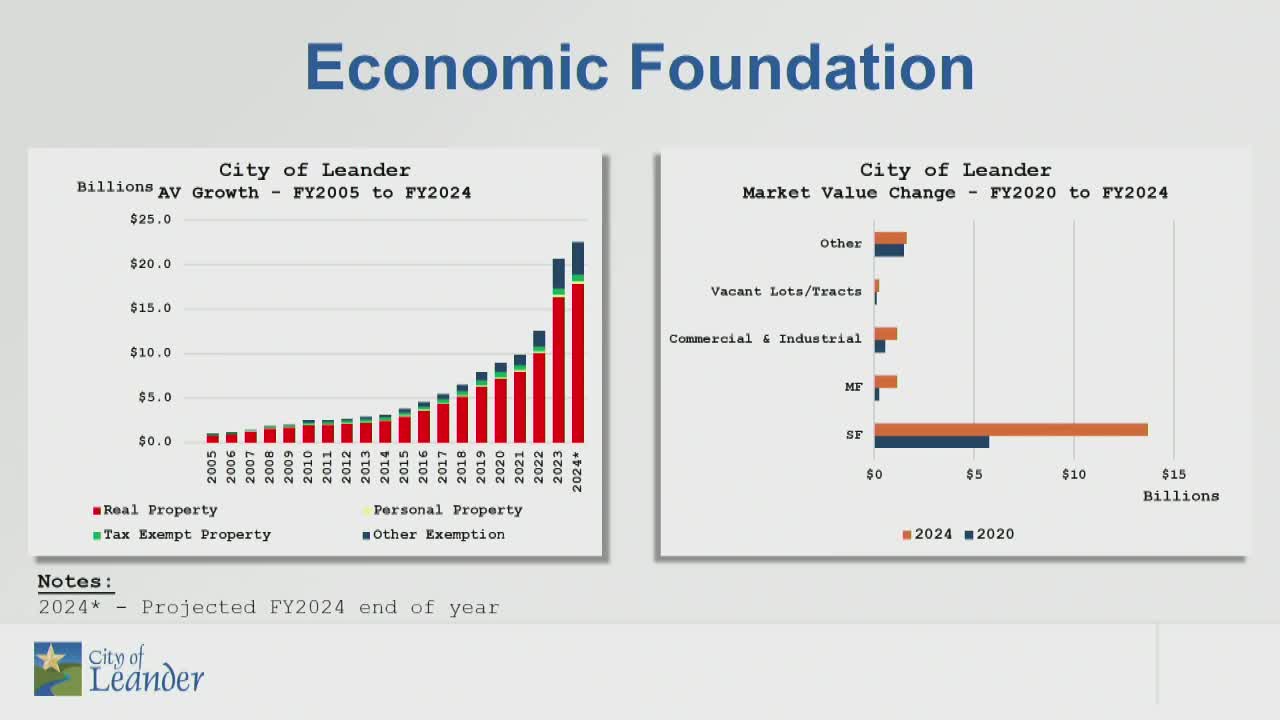City braces for economic shifts amid property tax growth
July 26, 2024 | Leander, Williamson County, Texas

This article was created by AI summarizing key points discussed. AI makes mistakes, so for full details and context, please refer to the video of the full meeting. Please report any errors so we can fix them. Report an error »

During a recent government meeting, city officials discussed the historical growth of assessed value (AV) in the community, emphasizing the predominance of single-family residential properties as the main driver of this growth. The analysis revealed that while the city has experienced consistent AV growth, there are underlying economic cycles that could impact future sustainability. Notably, officials identified a recurring 6 to 7-year economic cycle, which raises concerns about potential downturns in property tax assessments.
The discussion highlighted the resilience of the city during past economic recessions, particularly during the Great Recession of 2009, when ongoing development projects helped maintain steady growth despite broader economic challenges. This resilience contrasts with other cities that faced significant declines during the same period.
Officials also addressed the complexities of property tax assessments, explaining the difference between market value and taxable value. State law limits the increase in taxable value for residential homesteads to a maximum of 10% annually, which can lead to discrepancies between market and taxable values, especially in fluctuating markets.
Looking ahead, city officials are preparing for potential economic fluctuations by utilizing historical data to forecast future growth trends. They anticipate a sustained level of growth, with projections indicating a population increase to over 90,000 by the end of the fiscal year 2025, driven by ongoing residential permitting activity.
As the city continues to navigate these economic dynamics, officials remain focused on ensuring sustainable growth while preparing for potential challenges that may arise in the future.
The discussion highlighted the resilience of the city during past economic recessions, particularly during the Great Recession of 2009, when ongoing development projects helped maintain steady growth despite broader economic challenges. This resilience contrasts with other cities that faced significant declines during the same period.
Officials also addressed the complexities of property tax assessments, explaining the difference between market value and taxable value. State law limits the increase in taxable value for residential homesteads to a maximum of 10% annually, which can lead to discrepancies between market and taxable values, especially in fluctuating markets.
Looking ahead, city officials are preparing for potential economic fluctuations by utilizing historical data to forecast future growth trends. They anticipate a sustained level of growth, with projections indicating a population increase to over 90,000 by the end of the fiscal year 2025, driven by ongoing residential permitting activity.
As the city continues to navigate these economic dynamics, officials remain focused on ensuring sustainable growth while preparing for potential challenges that may arise in the future.
View full meeting
This article is based on a recent meeting—watch the full video and explore the complete transcript for deeper insights into the discussion.
View full meeting
